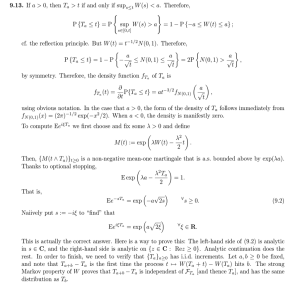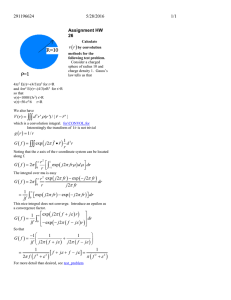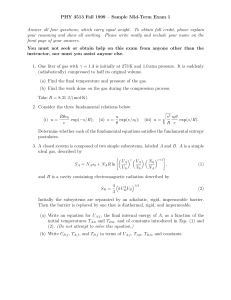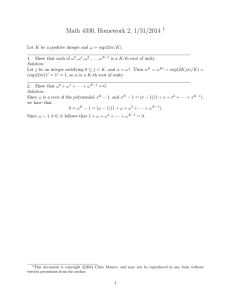Phys604/F15/Hassam/Problem Set 4 Due 10/06/15 Arfken, Weber
advertisement
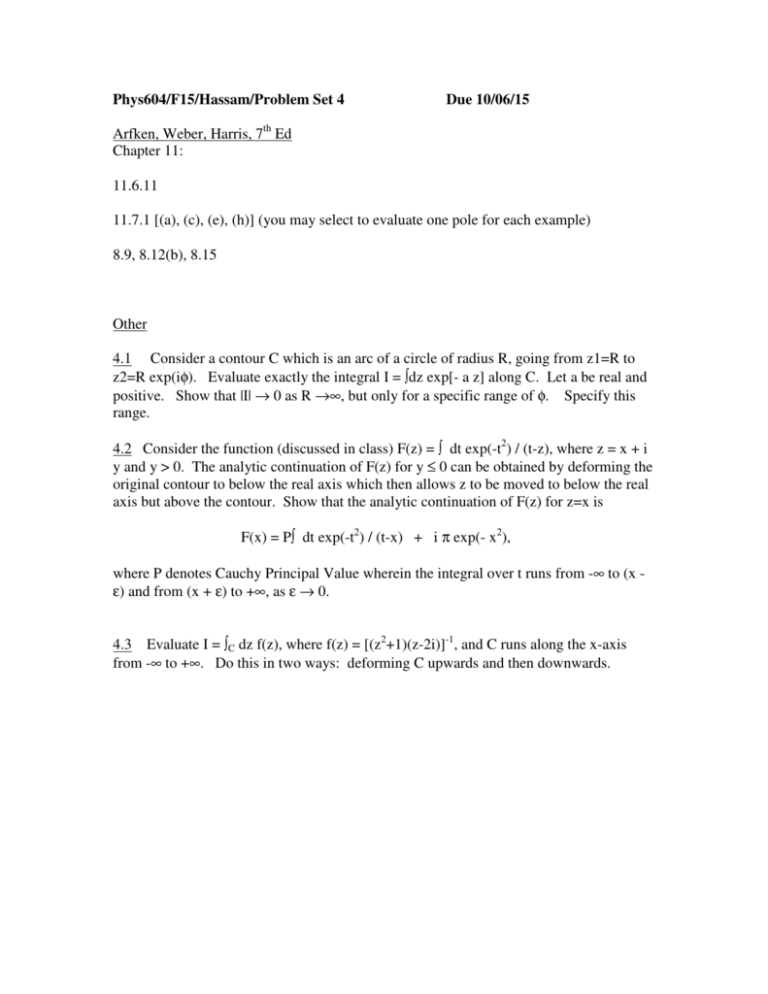
Phys604/F15/Hassam/Problem Set 4 Due 10/06/15 Arfken, Weber, Harris, 7th Ed Chapter 11: 11.6.11 11.7.1 [(a), (c), (e), (h)] (you may select to evaluate one pole for each example) 8.9, 8.12(b), 8.15 Other 4.1 Consider a contour C which is an arc of a circle of radius R, going from z1=R to z2=R exp(iφ). Evaluate exactly the integral I = ∫dz exp[- a z] along C. Let a be real and positive. Show that |I| → 0 as R →∞, but only for a specific range of φ. Specify this range. 4.2 Consider the function (discussed in class) F(z) = ∫ dt exp(-t2) / (t-z), where z = x + i y and y > 0. The analytic continuation of F(z) for y ≤ 0 can be obtained by deforming the original contour to below the real axis which then allows z to be moved to below the real axis but above the contour. Show that the analytic continuation of F(z) for z=x is F(x) = P∫ dt exp(-t2) / (t-x) + i π exp(- x2), where P denotes Cauchy Principal Value wherein the integral over t runs from -∞ to (x ε) and from (x + ε) to +∞, as ε → 0. 4.3 Evaluate I = ∫C dz f(z), where f(z) = [(z2+1)(z-2i)]-1, and C runs along the x-axis from -∞ to +∞. Do this in two ways: deforming C upwards and then downwards.

